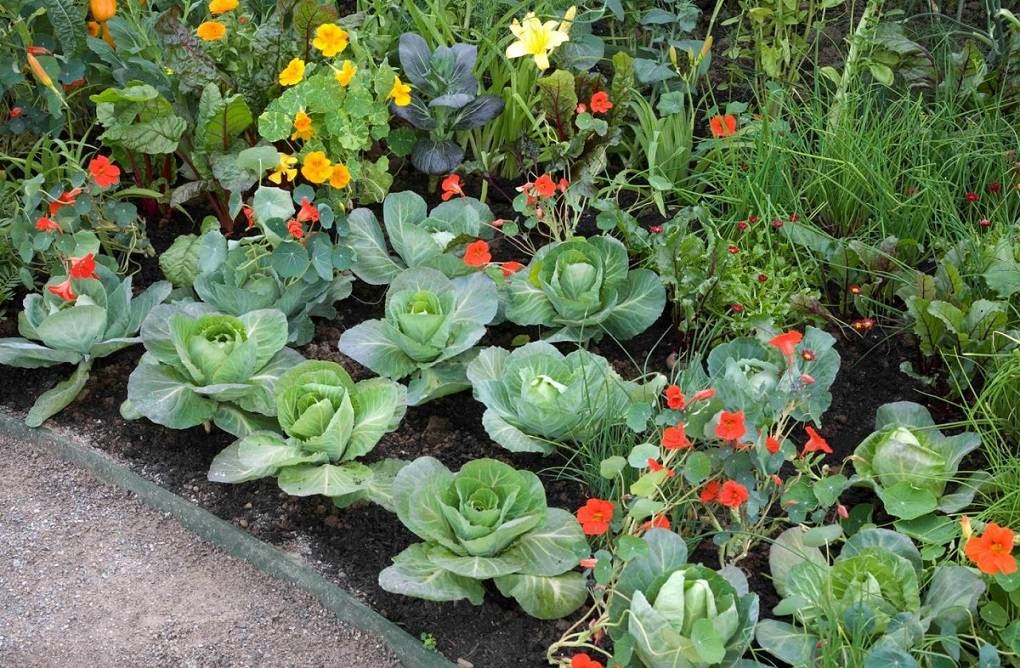
Companion planting refers to a gardening technique where two plants are grown near each other for the benefit of one of these plants or both. Gardeners have plenty of good reasons to practice companion planting. Let us take a look.
-
Deters pests- Companion planting helps deter pests, such as small insects or critters. For instance, planting garlic around your crop, which is extremely susceptible to aphid attacks, protects the crop from aphid infestation. Some companion plants also attract natural enemies of the pests to help control pest damage.
-
Increased yield- Companion planting helps maximize crop yields. The exact mechanism behind this varies according to the different plant combinations. For instance, cornstalks provide bean crops with a living trellis to climb and thrive on.
-
Attract beneficial insects- Companion planting helps attract beneficial insects such as pollinating bees or the natural enemies of the pests.
-
Maximizes space- In companion planting, several plant species are planted close together. This practice helps maximize garden space and helps free up space that was previously wasted.
-
Shade regulation- Planting larger plants around the main crop which doesn’t grow very tall helps provide shade to the plant during the summer.
-
Soil health- Certain companion plant combinations improve the nutrient quality of the soil. For instance, growing beans and peas are advised to grow next to plants that absorb a lot of nitrogen from the soil as they add nitrogen to it. On the other hand, carrots and radishes are advised to grow to help prevent soil compaction which leads to water wastage.
-
Weed suppression- Planting sprawling crops like potatoes with tall, upright plants minimizes open areas, where weeds typically take hold.
Good Combinations for Companion Planting
-
Basil and tomato- Basil and tomato are planted together. This is because basil helps repel pests such as thrips and moths which lay hornworms on the tomato plant. The basil plant also attracts bees which improves pollination and tomato health and flavour.
-
Cabbages and aromatic herbs- Cabbages are highly susceptible to pest infestations, such as worms, which can ruin entire crops. Planting aromatic herbs such as rosemary and basil can help repel invasive insect species. Sometimes tomatoes are also planted near cabbages to repel moths, however, this pairing is not ideal as the two species quickly start competing for nutrients.
-
Dill- Dill is a fantastic herb that can be grown on the perimeter of the garden to attract ladybugs, which eat small garden pests such as aphids and spider mites.
-
Cucumbers, radishes, and sunflowers- Planting cucumbers and radishes together improve their growth and productivity. Planting sunflowers near cucumbers provides shade to the cucumbers.
-
Garlic, cabbage, and potatoes- Planting garlic is a great way to deter many insects such as aphids, onion flies, Japanese beetles, and ermine moths. Garlic should be planted next to plants and crops that attract such pests. When grown alongside alyssum, garlic even helps attract aphid-eating hoverflies.
-
Parsley and tomatoes- Parsley can be grown alongside tomatoes to protect and pollinate them.
-
Mint- Mint is a plant that emits a pungent smell that deters pests like flea beetles, aphids, and ants.
Bad combinations for companion planting
-
Do not grow tomatoes and potatoes together, as both plants will fight for the same nutrients in the soil.
-
Cucumbers should not be grown alongside aromatic herbs as growing them in the same soil can affect the way cucumbers smell.
-
Onions and beans should not be grown near each other as onions can hinder beans’ growth.










